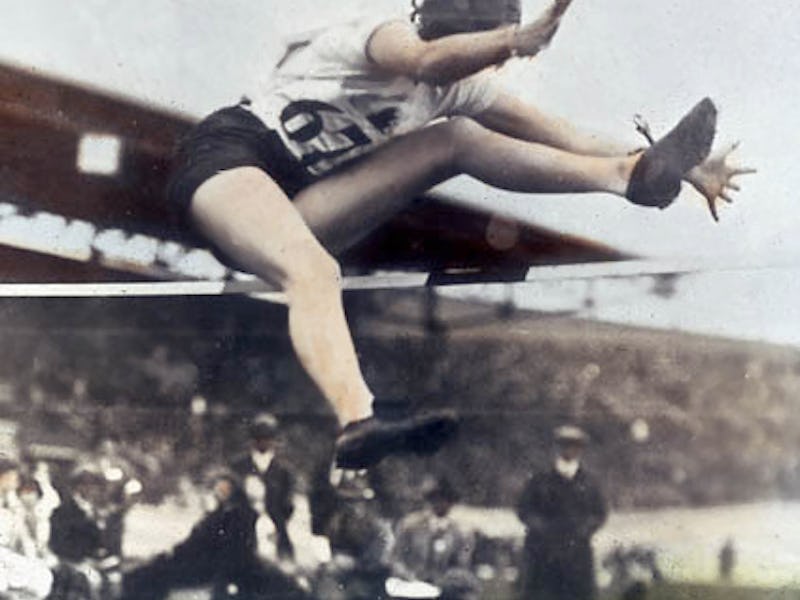Fanny Blankers-Koen: The Physics Behind the "Flying Housewife's" High Jump
Here's how to fight gravity with science.

Google paid tribute to Fanny Blankers-Koen with a homepage doodle on Thursday, marking the late Dutch athlete’s 100th birthday. Blankers-Koen upended archaic stereotypes about age and motherhood when she trounced her competition at the 1948 Olympics to the tune of four gold medals, setting the record for winningest female track athlete at a single game.
While Blankers-Koen is most well-known for her running prowess, she was also an elite jumper in a long line of gravity-defying Olympians. In fact, Blankers-Koen held the world records for both high jump and long jump entering into the 1948 games. However, she chose to focus on running, as rules dictated that an athlete could only compete in three individual track events.
But for eight years, Blankers-Koen was the best high jumper around. Her personal best of 1.71 meters (5 feet and over 7 inches) stood from 1943 until 1951, when British jumper Sheila Lerwill bested her by .01 meters. Today, the world record is held by Bulgarian Stefka Kostadinova, who cleared 2.09 meters (over 6 feet and 10 inches) in 1987.
The disparity between Blankers-Koen’s and Kostadinova’s records, set only 44 years apart, can be explained by the physics of their respective jumping techniques. Blankers-Koen used the now-archaic “scissor jump” technique in competition, while Kostadinova used the modern standard “Fosbury Flop.”
High jumpers are fighting against the tug of gravity. It requires more energy — and therefore more power — to jump higher off the ground. With the scissor kick, athletes are effectively pushing their entire bodies to a height above the bar. This means their center of gravity is higher than the bar. With the Fosbury Flop, on the other hand, athletes arch their backs, keeping their limbs down below the bar and their centers of gravity low.
That’s what makes the Fosbury Flop such an effective technique. Because the center of gravity is lower, it requires less power to reach the same height as someone who is using the scissor jump technique. In fact, when an athlete uses the Fosbury Flop, their center of gravity actually passes below the bar while they squeak over the top.
The whole thing can be summed up with the equation U2 = 2gH, where g is the constant acceleration of gravity pulling the jumper down, U is the acceleration of the jumper going upwards, and H is the height of the jumper’s center of gravity. If you keep your center of gravity low, you exert less energy in the upward acceleration of your jump. So it’s possible that Kostadinova and Blankers-Koen were exerting the same upward force, but because of improved techniques, Kostadinova cleared Blankers-Koen’s record by more than a foot.
If the Fosbury Flop had been invented 40 years earlier, perhaps the Flying Housewife would’ve set a record to stand the test of time. Still, even without further high jumping accolades, Blankers-Koen’s legacy is okay. After all, she’s the mother who swept the Olympics.